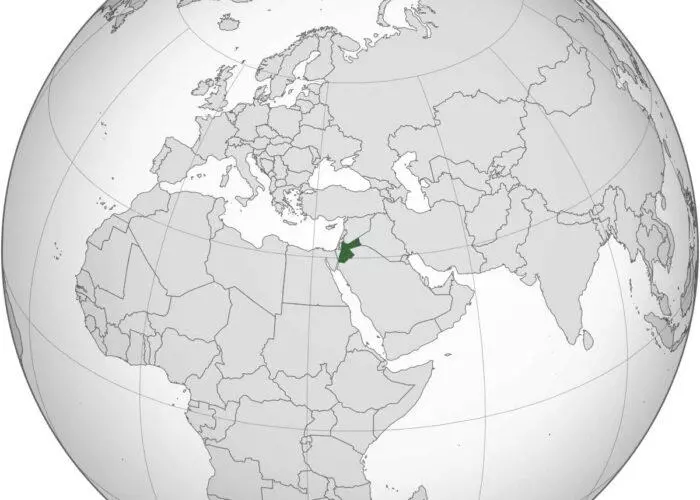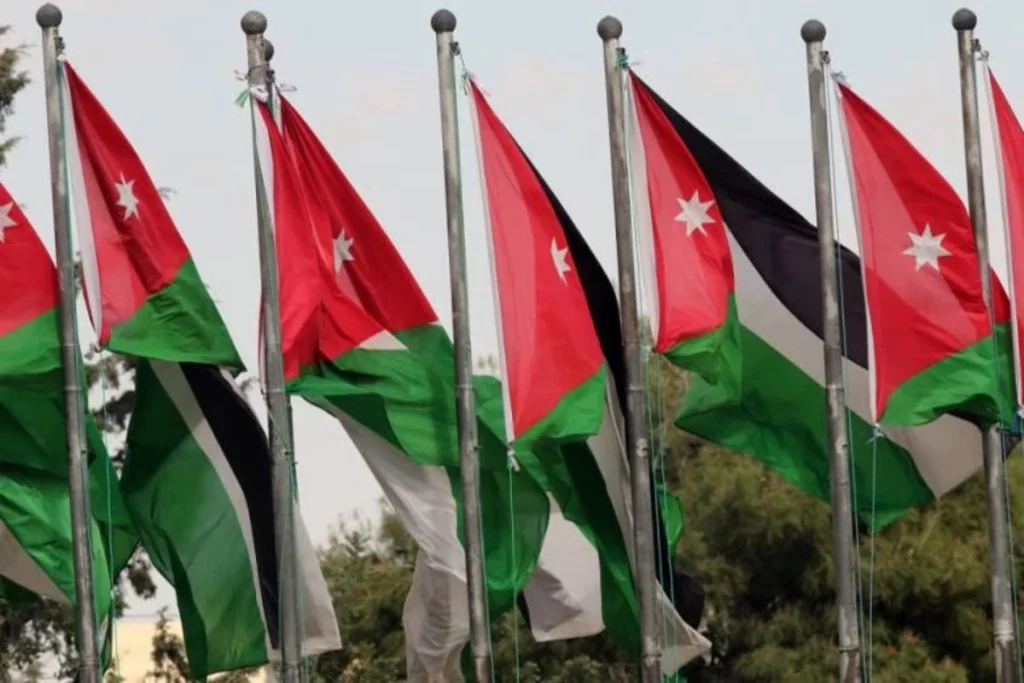The lowest nature reserve on earth !
Jordan Flag
The flag of Jordan stands tall, representing unity, freedom, and heritage.
The flag of Jordan is a powerful symbol of the country’s history, culture, and national identity. It consists of three horizontal stripes—black, white, and green—representing the Arab Revolt and the great Arab dynasties of the past: the Abbasids, Umayyads, and Fatimids. A striking red chevron on the left side symbolizes the Hashemite dynasty and the sacrifices made for independence. Within this red triangle lies a seven-pointed white star, which represents the seven verses of the opening chapter of the Quran (Al-Fatiha) and stands for faith, unity, and hope. Officially adopted on April 16, 1928, the Jordanian flag is deeply rooted in the Arab Revolt of 1916, led by Sharif Hussein bin Ali against Ottoman rule. Today, it proudly waves as a representation of Jordan’s sovereignty, unity, and the resilience of its people.
Jordan is a strategically located country in the Middle East, sharing borders with Egypt to the southwest, Iraq to the northeast, Israel and the West Bank to the west, Lebanon near the northwest, Saudi Arabia to the south and southeast, and Syria to the north. It lies at the crossroads of Asia, Africa, and Europe, making it an important regional hub in terms of trade, culture, and politics. Jordan’s capital, Amman, is the largest and most populous city, known for its rich history and landmarks such as the Amman Citadel and the Roman Theater. Other significant cities include Zarqa, a major industrial center, and Irbid, a historic city renowned for its universities and Roman ruins. As-Salt, a UNESCO World Heritage Site, is notable for its well-preserved Ottoman architecture, while Ma’an serves as a gateway to the world-famous Nabataean city of Petra. Kerak is recognized for its Crusader-era castle, and Aqaba, Jordan’s only coastal city, is a renowned tourist destination on the Red Sea, known for its stunning beaches and coral reefs.


Beyond these major cities, Jordan is home to numerous other towns, each contributing to the country’s cultural and economic landscape. Places like Al-Husun, At-Turrah, Sahab, At-Tafilah, Ar-Ramtha, Al-Mafraq, Jerash, and Ajloun reflect Jordan’s diverse heritage and regional importance. The country also possesses valuable natural resources, including phosphates, potash, and shale oil, which play a key role in its economy. However, Jordan faces environmental challenges such as deforestation, overgrazing, soil erosion, and desertification. Additionally, the country struggles with limited freshwater resources, making water conservation a crucial issue. Natural hazards like droughts and periodic earthquakes further impact the nation’s environmental and economic stability. Despite these challenges, Jordan remains a resilient nation, known for its historical significance, cultural richness, and its role as a center of stability in the Middle East.
Design and Colors
The national flag of Jordan consists of three horizontal stripes in black, white, and green, with a red chevron (triangle) on the left side that contains a seven-pointed white star in the center. The flag’s design is inspired by the flag of the Arab Revolt of 1916 and represents Jordan’s historical and political identity.
Symbolism of the Colors and Elements
- Black Stripe – Represents the Abbasid Caliphate, a major Islamic dynasty.
- White Stripe – Symbolizes the Umayyad Caliphate, which once ruled vast territories.
- Green Stripe – Represents the Fatimid Caliphate, another significant Islamic dynasty.
- Red Chevron – Stands for the Hashemite dynasty and the sacrifices made during the Arab Revolt against Ottoman rule.
- Seven-Pointed White Star – Represents the seven verses of the opening chapter of the Quran (Al-Fatiha) and symbolizes faith, unity, and hope for the Arab nation.
Historical Background
The Jordanian flag is based on the flag of the Arab Revolt (1916–1918), which was led by Sharif Hussein bin Ali against the Ottoman Empire. Jordan officially adopted the flag on April 16, 1928, after gaining autonomy under British rule. Since then, it has remained a symbol of Jordan’s sovereignty, national pride, and the unity of the Arab world.
Usage and Significance
The flag is widely displayed on national holidays, official buildings, and public events. It serves as a unifying emblem for Jordanians, representing their rich heritage, independence, and aspirations for a prosperous future.
Other Archaeological highlights

Amman, the capital of Jordan, proudly displays the Jordanian national flag, which symbolizes the country’s history, unity, and national identity. The flag consists of three horizontal stripes in black, white, and green, along with a red chevron on the left side containing a seven-pointed white star. These colors represent the great Arab Islamic dynasties—the Abbasids (black), Umayyads (white), and Fatimids (green)—while the red chevron symbolizes the Hashemite dynasty and the Arab Revolt of 1916. The seven-pointed white star stands for the first seven verses of the Quran’s opening chapter (Al-Fatiha) and represents unity, faith, and hope.
In Amman, the Raghadan Flagpole, one of the tallest in the world at 126.8 meters, prominently flies the Jordanian flag near the Raghadan Palace, a symbol of national pride and leadership. The flag is widely displayed throughout the city, particularly in government buildings, historical sites, and public squares, reinforcing Amman’s role as the heart of Jordan’s political, cultural, and historical heritage.
